Navicular Syndrome: What Every Horse Owner Should Know
Navicular Syndrome in horses is a progressive degenerative condition of the navicular bone and surrounding structures in the horse’s foot. It is characterized by chronic lameness and pain, particularly in the front hooves, and is believed to be caused by a combination of factors such as excessive exercise, improper foot conformation, and abnormal wear and tear on the navicular bone.
Navicular Syndrome can impact a horse’s ability to perform and may limit its range of motion, but with proper treatment and management, it can be managed to help reduce pain and improve quality of life.
The veterinary term for Navicular Syndrome is podotrochleitis because it can involve more of the podotrochlear apparatus than just the navicular bone. This includes the navicular bursa and associated soft tissue structures such as the deep flexor tendon and collateral ligament of the distal interphalangeal joint – otherwise known as the coffin bone.
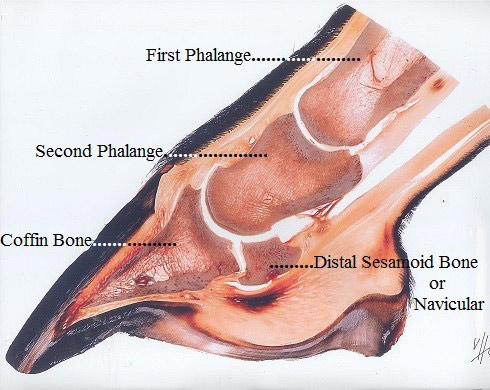
Prevalence and Importance in Horses
Nearly one-third of all chronic horse lameness cases are caused by Navicular disease, which typically affects the front hooves, but it can also occur in the hind hooves, although less frequently.
This degenerative condition, whose exact cause remains unknown, is thought to be linked to excessive exercise and improper foot conformation. Although it cannot be cured, proper management and treatment can help to alleviate pain and improve your horse’s quality of life.
Causes
The exact cause of navicular syndrome in horses is not well understood, but it is believed to be the result of a combination of factors.
One of the primary contributing factors is excessive exercise, particularly high-impact activities like jumping, racing, and endurance riding.
Improper conformation of the horse’s foot, such as high or collapsed heels, can also increase the stress on the navicular bone and lead to the development of navicular syndrome.
Abnormal wear and tear on the navicular bone due to improper shoeing, hard or uneven terrain, and underlying foot problems such as thin soles or contracted heels may also contribute to the development of this condition.
Additionally, some cases of navicular syndrome may be related to genetic factors. While all breeds of ponies and Arab horses do not develop the condition, it can be prevalent in warmbloods, Thoroughbreds, and Quarter Horses.
Symptoms
The symptoms of navicular syndrome in horses can vary, but typically include:
- Lameness: Navicular syndrome often causes chronic lameness, particularly in the horse’s front hooves. The lameness may be mild or severe and may start gradually or suddenly.
- Pain: Horses with navicular syndrome may show signs of pain, especially when the affected foot is touched, picked up, or put under weight.
- Changes in gait: Horses with navicular syndrome may change their gait to reduce the amount of weight they put on the affected foot. This may result in a short, choppy stride or a “pawing” motion with the affected hoof.
- Hoof changes: Horses with navicular syndrome may develop changes in the shape and appearance of the affected hoof, including a low or dropped heel, long toes, and a distorted hoof wall.
- Sensitivity to shoeing: Horses with navicular syndrome may become sensitive to shoeing or may refuse to have their feet handled.
It is important to note that the symptoms of navicular syndrome can be similar to other conditions, so it is important to consult with a veterinarian for a proper diagnosis.
Diagnosing
The diagnosis of navicular syndrome in horses typically involves a combination of physical examination, imaging, and other diagnostic tests. The following steps are commonly involved in diagnosing navicular syndrome:
- Physical examination: A veterinarian will examine the horse’s hooves, legs, and gait to identify any signs of lameness or pain. The veterinarian will also look for any physical changes in the horse’s hooves that may indicate navicular syndrome.
- Flexion tests: The veterinarian may perform flexion tests, where the horse’s leg is bent at the knee and held in place for a short period, to see if lameness is increased.
- Imaging: Radiographs (X-rays) are often used to help diagnose navicular syndrome, as they can show changes in the navicular bone and other structures in the foot. More advanced imaging techniques such as MRI or CT scans may also be used to obtain a more detailed image of the navicular bone and surrounding structures.
- Nerve blocks: The veterinarian may perform nerve blocks, where a local anesthetic is injected into the affected area, to help determine if the navicular bone is the source of pain.
- Hoof testers: The veterinarian may also use hoof testers to apply pressure to different areas of the foot to identify any areas of sensitivity or pain.
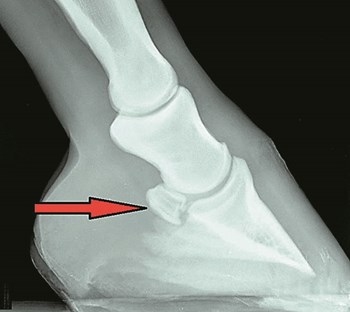
It is important to note that the diagnosis of navicular syndrome can be challenging, and multiple diagnostic tests may be needed to confirm the diagnosis. The veterinarian will consider the horse’s symptoms, medical history, and physical examination findings to make a diagnosis.
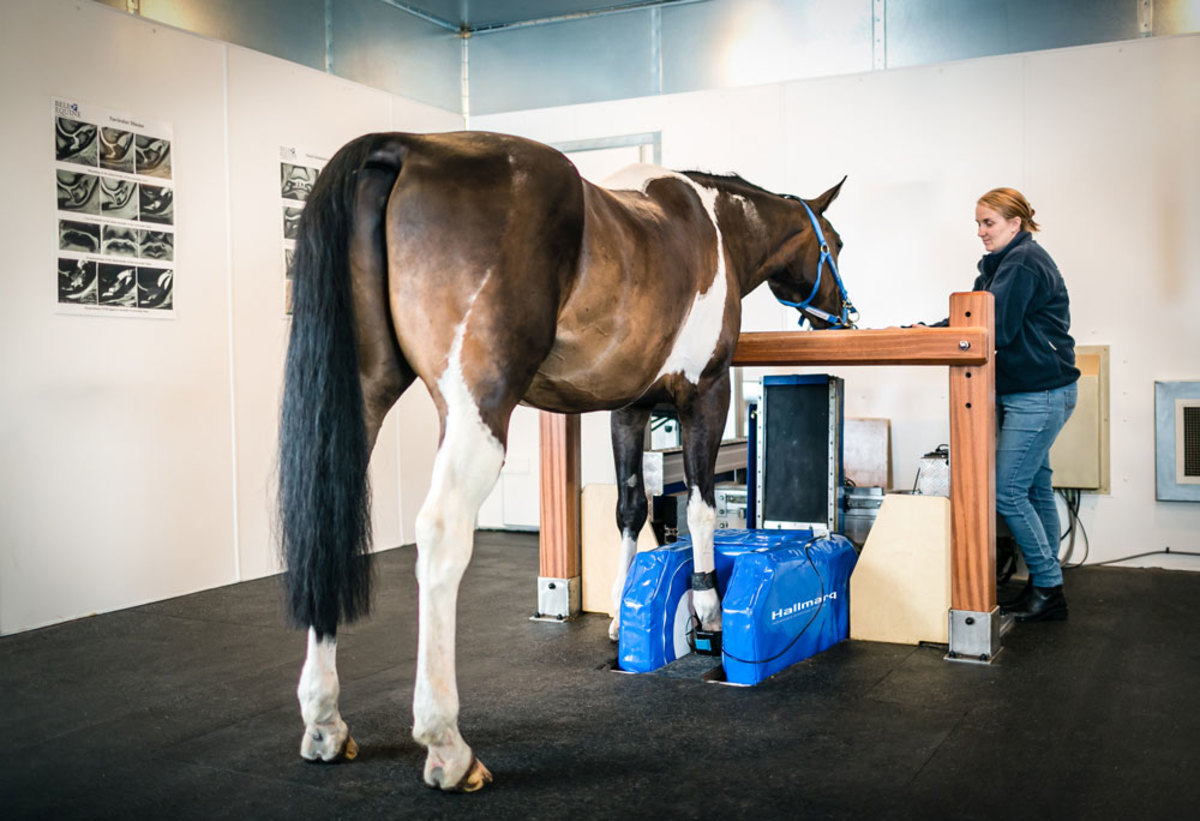
Treatment
The treatment of navicular syndrome in horses will depend on the severity of the condition and the individual horse, but the following approaches are commonly used:
- Pain management: Pain relief is a key component of treatment for navicular syndrome. Non-steroidal anti-inflammatory drugs (NSAIDs) or other pain medications may be prescribed to manage pain.
- Shoeing modifications: Changing the horse’s shoes to help distribute weight more evenly across the foot and relieve pressure on the navicular bone can be beneficial.
- Foot care: Proper foot care, including regular trimming and shoeing, can help reduce the amount of stress on the navicular bone and prevent further damage.
- Therapeutic exercises: Gentle, low-impact exercises, such as walking and hand-walking, can help maintain muscle tone and improve circulation in the affected limb.
- Shockwave therapy: Extracorporeal shockwave therapy (ESWT) uses sound waves to stimulate blood flow and promote healing in the navicular bone and surrounding tissues.
- Injections: Intra-articular injections of corticosteroids or other medications into the navicular bursa can help reduce inflammation and relieve pain.
- Surgery: In severe cases of navicular syndrome, surgery to remove the navicular bone may be necessary to relieve pain.
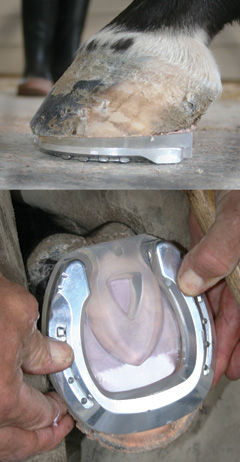
It is important to work closely with a veterinarian to determine the best treatment approach for your horse and to regularly monitor the horse’s progress. Treatment for navicular syndrome can take time, and ongoing management may be necessary to maintain pain relief and prevent the condition from worsening.
Prevention
Here are some steps you can take to help prevent navicular syndrome in your horse:
- Proper hoof care: Regular trimming and shoeing can help maintain a healthy foot structure and reduce stress on the navicular bone.
- Appropriate exercise: Gradual, controlled exercise and training can help reduce the risk of developing navicular syndrome. Avoiding high-impact activities or sudden changes in training can also help reduce the risk of developing this condition.
- Proper nutrition: Providing your horse with a balanced diet that includes all essential nutrients can help maintain overall health and prevent conditions like navicular syndrome.
- Avoid over-weight: Keeping your horse at a healthy weight can reduce the amount of stress placed on the horse’s hooves and legs, reducing the risk of developing navicular syndrome.
- Monitoring: Regular monitoring of your horse’s gait, hooves, and overall health can help identify any changes or issues early on, allowing for prompt treatment and reducing the risk of developing navicular syndrome.
- Breeding: Careful breeding practices can also help reduce the risk of navicular syndrome, as some horse breeds are predisposed to this condition.
It is important to remember that navicular syndrome is often a result of a combination of factors, and it is not always possible to completely prevent the condition. By taking these steps, you can reduce the risk of developing navicular syndrome and maintain the health and comfort of your horse.
Conclusion
Navicular syndrome is a progressive, degenerative condition that affects the navicular bone in the horse’s hoof. It is often responsible for chronic lameness in the horse, and is most commonly found in the front hooves, although it can also affect the hind hooves.
The exact cause of navicular syndrome is not fully understood, but it is believed to be related to extreme exercise and improper conformation of the foot. Symptoms of navicular syndrome include pain, lameness, and changes in the horse’s gait.
Diagnosis of navicular syndrome is typically made through a combination of clinical examination, imaging tests, and other diagnostic techniques.
Treatment options for navicular syndrome include pain management, shoeing modifications, therapeutic exercises, shockwave therapy, injections, and surgery.
Preventive measures include proper hoof care, appropriate exercise, proper nutrition, monitoring, and careful breeding practices.
It is important to work closely with a veterinarian to determine the best course of treatment for your horse.
further reading
The following links provide a wealth of information about navicular syndrome in horses, including information about diagnosis, treatment, and management, as well as the latest research and resources.
- American Association of Equine Practitioners (AAEP) – The AAEP has a wealth of information about navicular syndrome, including information about diagnosis, treatment, and management.
- The Horse – The Horse is a comprehensive resource for all things equine, including information about navicular syndrome, hoof care, and more.
- Navicular Disease in Horses – Musculoskeletal Systemhttps://www.msdvetmanual.com › lameness-in-horses Navicular disease is one of the most common causes of chronic forelimb lameness in the athletic horse but is essentially unknown in ponies and donkeys.

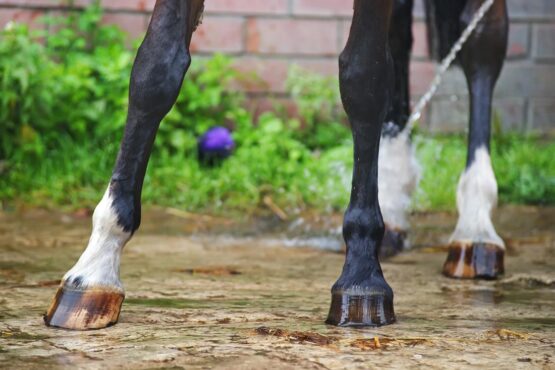





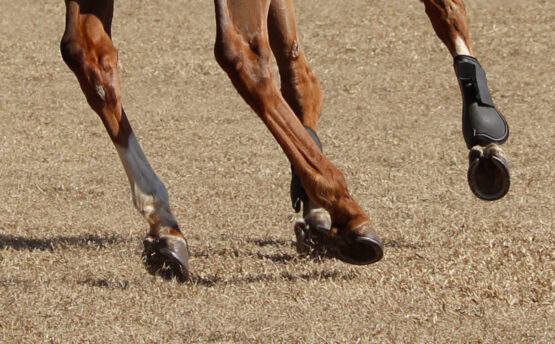
One Comment